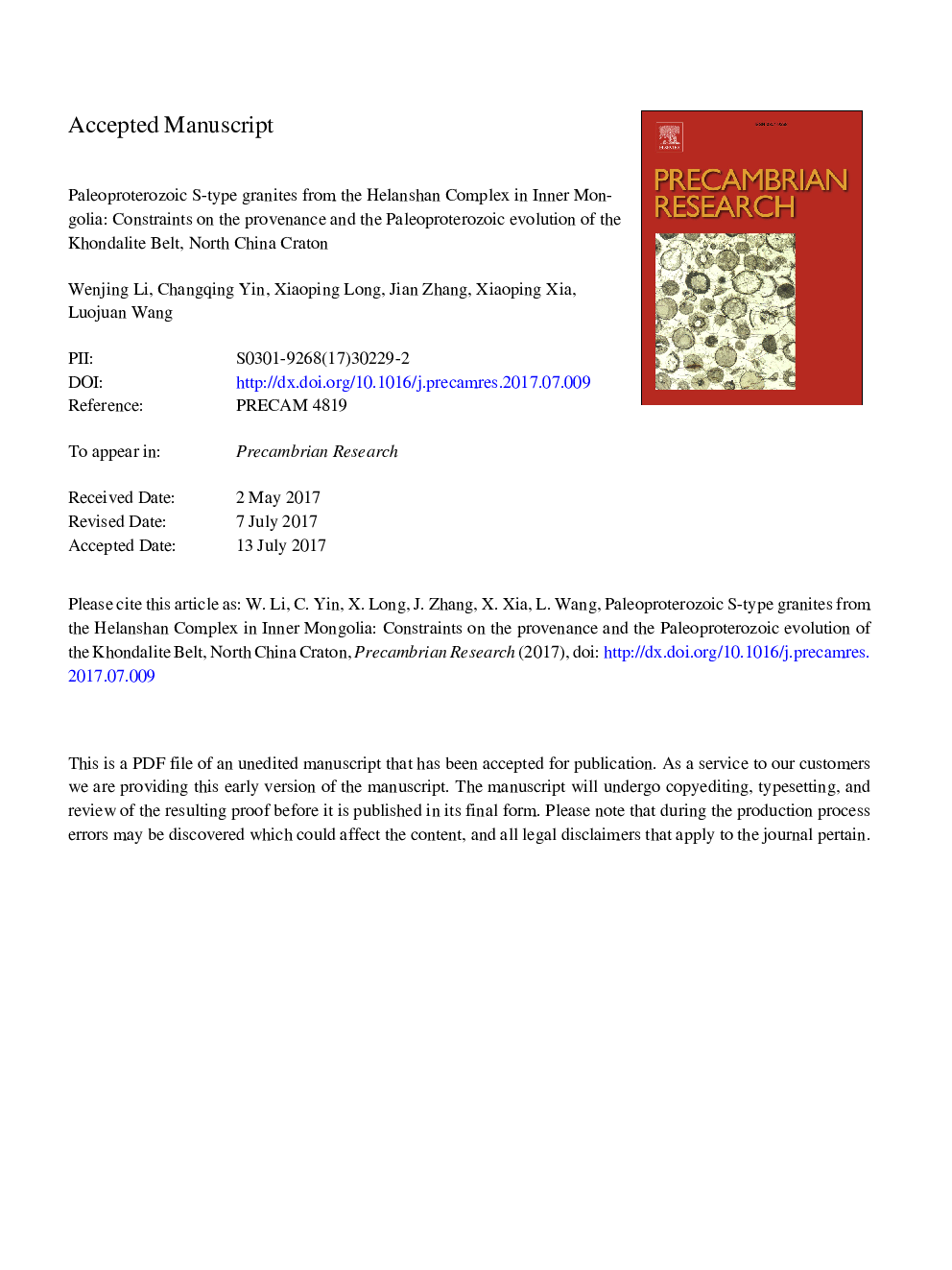| Article ID | Journal | Published Year | Pages | File Type |
|---|---|---|---|---|
| 5784714 | Precambrian Research | 2017 | 48 Pages |
Abstract
The Khondalite Belt is a Paleoproterozoic tectonic belt in the Western Block of the North China Craton. It consists mainly of high-grade metamorphosed Al-rich sedimentary rocks, also named as the 'Khondalite Series'. The vast majority of detrital zircons from the Khondalite Series rocks have ages dominantly at 2.2-2.0 Ga, but their provenances become an enigma due to lack of available synchronous magmatic rocks. In this paper, detailed geochronological and geochemical studies were done on Mid-Paleoproterozoic granites from the Helanshan Complex in the westernmost part of the Khondalite Belt to constrain the provenance of the Khondalite Series rocks and the tectonic setting of this belt. These granites can be divided into two types: the garnet-bearing granite and the two-mica granite. Both kinds of granite contain peraluminous minerals (i.e., garnet, muscovite), and are characterized by variable SiO2 (72.1-77.5 wt%), high Al2O3 (11.79-18.93 wt%) and A/CNK values (1.09-1.27) as well as high zircon δ18O values (7.30-11.49â°), indicating an origin of typical S-type granites. They are enriched in Rb, Th, U, LREE ((La/Yb)N = 19.2-202) and display pronounced negative Nb-Ta-Ti and Eu (Eu/Euâ = 0.28-0.94) anomalies, similar to geochemical characteristics of magmatic rocks formed in a subduction zone. Zircon SIMS U-Pb dating yielded consistent Paleoproterozoic intrusive ages of 2045 ± 17 Ma and 2069 ± 25 Ma for the garnet-bearing granite and the two-mica granite, respectively. These magmatic zircons have variable zircon εHf(t) values mostly ranging between â1.7 and +6.7, corresponding to Hf model ages (TDMC) of 2.2-2.8 Ga. The geochemical and isotopic features indicate that these S-type granites have been produced by partial melting of the ancient crust with addition of juvenile crustal or mantle-derived components. Combined with previous geological data of the Khondalite Belt, it is speculated that the â¼2.0 Ga magmatism was mostly likely generated in an active continental margin, providing robust evidence for a provenance for the clastic materials of the Khondalite Belt.
Related Topics
Physical Sciences and Engineering
Earth and Planetary Sciences
Geochemistry and Petrology
Authors
Wenjing Li, Changqing Yin, Xiaoping Long, Jian Zhang, Xiaoping Xia, Luojuan Wang,
